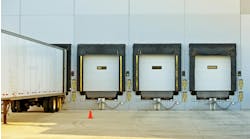Whether leasing or owning, there is no benefit to deferring maintenance
All too often when people are trying to make a case for ownership over leasing, they talk about lease end charges as being a “hidden” cost of leasing. They are typically referring to charges that can be levied on the lessee at the end of the lease term for damage and maintenance items that are not up to the standards laid out in the lease agreement.
It could be low tread depths on tires, brakes that are worn below a certain level or physical body damage. They contend that at the end of the useful life of an owned asset you can simply put it up for sale and not experience and additional expenses. Some fleet operators think there will be no financial impact if they sell a truck with worn tires, bad brakes and body damage.
The condition of a truck matters when sold or returned. If a fleet fails to maintain a truck, tractor or trailer throughout its life cycle, when that asset hits the used truck market it will not command that same price as a similar asset that has been well maintained.
Let’s consider this admittedly extreme example, which I am using to make a point. If you take an asset to market that is missing the engine hood, the used tractor buyer will deduct the cost of the hood from their offer. This is an expense in the form of a reduced sales price.
Let’s use that same example on a leased truck. A lessee turns in a truck with a missing engine hood, the lessor will either ask that the hood be replaced prior to return or charge the lessee for the missing item. In either case, the loss of revenue from the sale and the expense of repair are typically the same.
This brings me to the bigger subject of maintaining an asset throughout its life, whether leased or owned. By performing maintenance on a regular basis any costs can be dispersed throughout the life of the asset matching expenses with the use of the tractor and addressing maintenance and repair items as they occur.
Well maintained assets — those that are maintained according to manufacturer’s guidelines — are going to perform better than an asset in need of maintenance. Manufacturers set maintenance schedules to ensure assets continue to operate optimally throughout their life cycle.
There also is the driver piece to consider. David Heller, vice president of government affairs for the Truckload Carriers Association, recently said that the current driver shortage is at 80,000, which is a 30% increase over 2019. The American Trucking Associations said that by 2023 the industry will be short 100,000 drivers.
That is going to make it even more difficult to find and retain drivers. Professional truck drivers take pride in the vehicles they drive. Ask yourself this: are your trucks going to be an asset or a liability in your driver recruiting and retention efforts. Drivers are going to choose to go to work for a fleet that keeps its trucks not only looking good but also in good operating condition.
In both leasing and ownership, if everyone takes pride in the asset it is going to operate far better than if you just defer maintenance and fool yourself into thinking you are saving money by doing so.
Patrick Gaskins, senior vice president of Corcentric Fleet Solutions, oversees both sales and operations for Corcentric’s fleet offerings. Over the past 10 years, Gaskins has grown the fleet services area of Corcentric’s business by implementing a best-in-class asset management database and a data-driven approach to providing Corcentric clients with visibility into all areas of their fleet spend. He joined Corcentric in 2010, bringing over 30 years of experience as a financial services professional in the transportation industry. Gaskins leads a team of industry experts who work with a supply base of over 160 manufacturers to help the country’s largest fleets manage all aspects of their fleet operations and fleet-related spend. Gakins earned his BBA in Finance from the University of Miami, FL, and his CTP certification from the National Private Truck Council.




